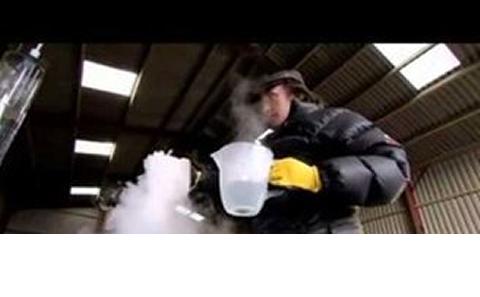
Bubble detectors invented for USA's Oak Ridge
Measuring gas bubbles in pipelines.
Measuring gas bubbles in pipelines is vital to the manufacturing, power and petrochemical industries.
Background
Professor Leighton (University of Southampton) was asked to develop ultrasonic bubble detectors for the USA's Oak Ridge National Laboratory $1.4 billion Spallation Neutron Source (SNS) Target Test Facility. At SNS, proton beams 9 inches in diameter are fired into a target consisting of 20 tonnes of liquid mercury. Mercury has the advantage over ordinary solid metal targets in that it can be pumped around to ensure it does not overheat under the influence of the proton beam. However the shock waves produced in the mercury by the impact of the proton beams cause erosion of the vessel that contains the radioactive mercury. ORNL will be injecting helium bubbles into the mercury to absorb the shock waves and prevent this happening – however they needed detectors to tell them how much helium had been injected in.

First the team conducted some careful theoretical studies of how the mercury-filled pipes would respond to their acoustic signals. This was done to establish a baseline for acoustic propagation in bubble-free conditions (click here; with validation and an interesting extraterrestrial application here).
They then used this baseline (click here) to show how to make the measurement in bubbly pipes work, and why the current method does not work, and that it is not worth building these sensors with the reduced frequency range affordable after the 2008 global financial crash – the cost savings would be made but the results would be insufficiently accurate.

The picture shows a schematic of the Spallation Neutron Source at Oak Ridge National Laboratory, Tennessee. The hydrogen ions for the linear accelerator are generated in the ‘front end’ building at the top left of the picture, and are accelerated down the linear accelerator (shown in red) to the ring, where protons are accumulated. During repeated circulation of the ring, more protons are added to ‘paint out’ the complete 9-inch diameter proton beam. When this is complete (which occurs 60 times per second), the proton pulse is released into the ‘target’ building, the centre of which houses the sarcophagus in which the actual mercury target is housed. A possible future target building is shown in ghost outline (images courtesy of ORNL).
For more information on bubble acoustics click here.


Measuring gas bubbles in pipelines.
The team built such detectors, and as a side-product, constructed a demonstration device for demonstrations for the public (click here)
and for a TV demo (click here):
Click here (scrolling to 26 minutes onwards for the Southampton contribution) for Richard Hammond's Engineering Connections,Series 3 Episode 5 "Space Shuttle" broadcast 5 June 2011.
Other media
Media coverage of Bubble detectors invented USA's Oak Ridge